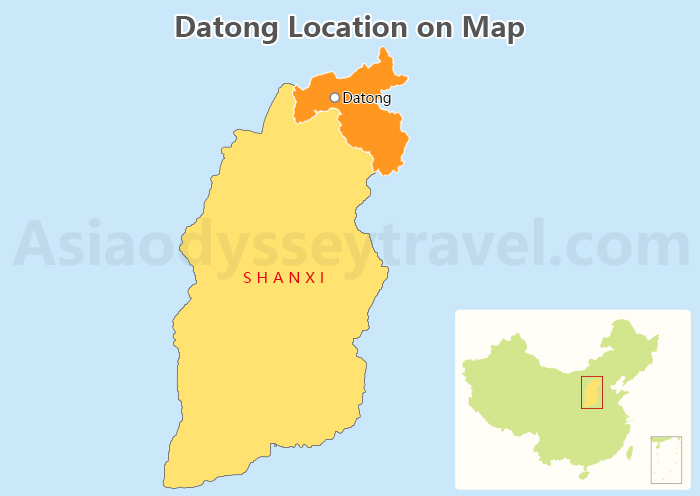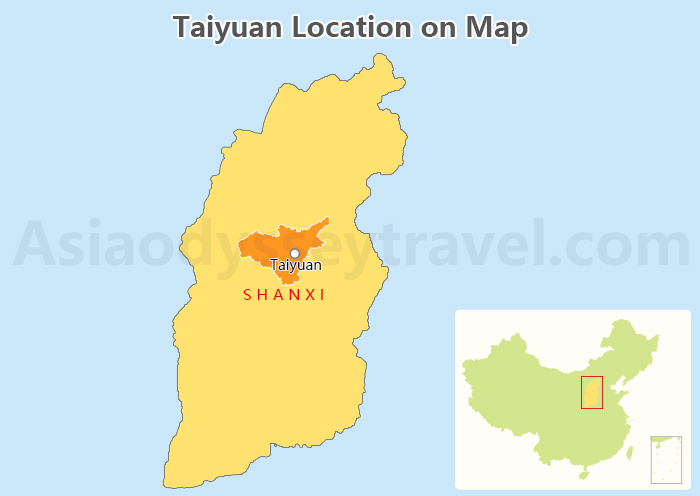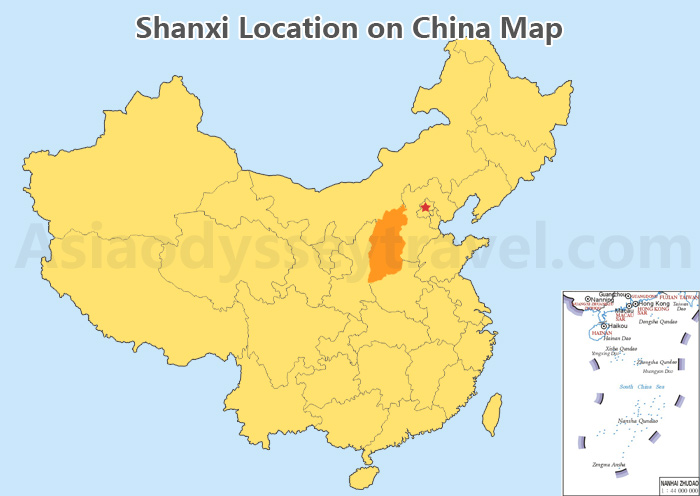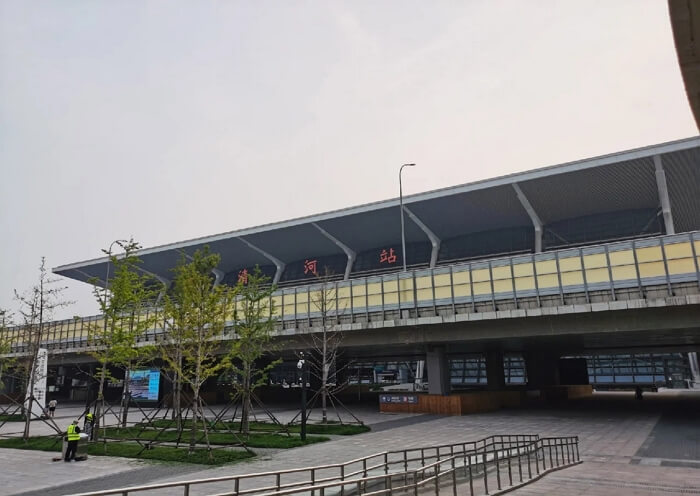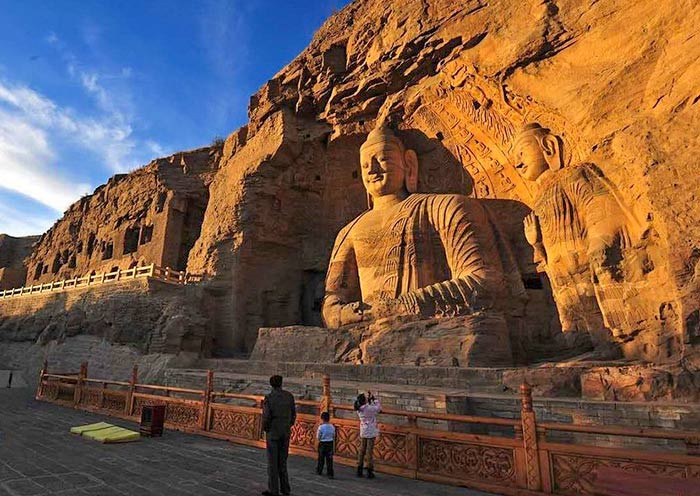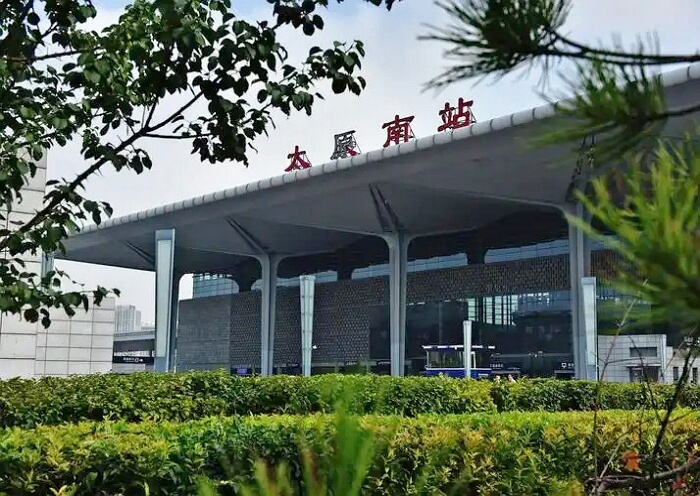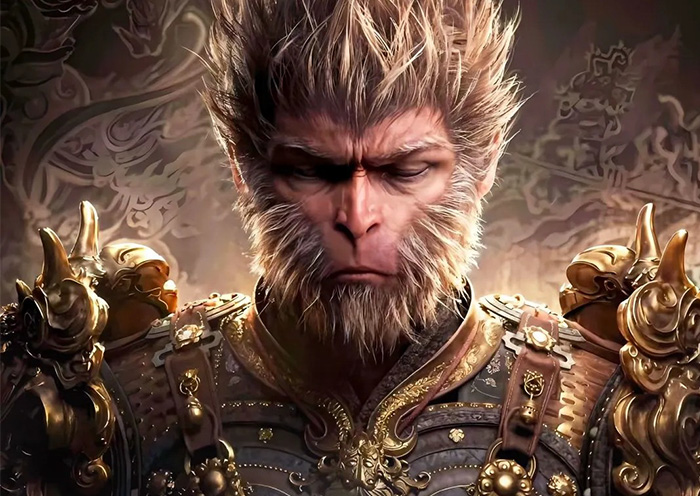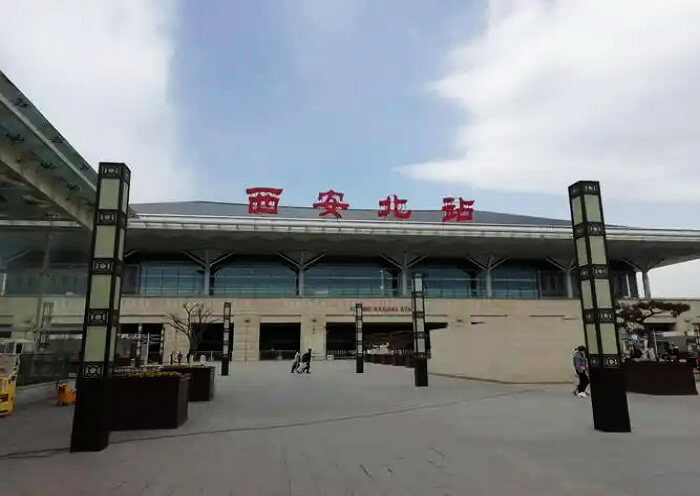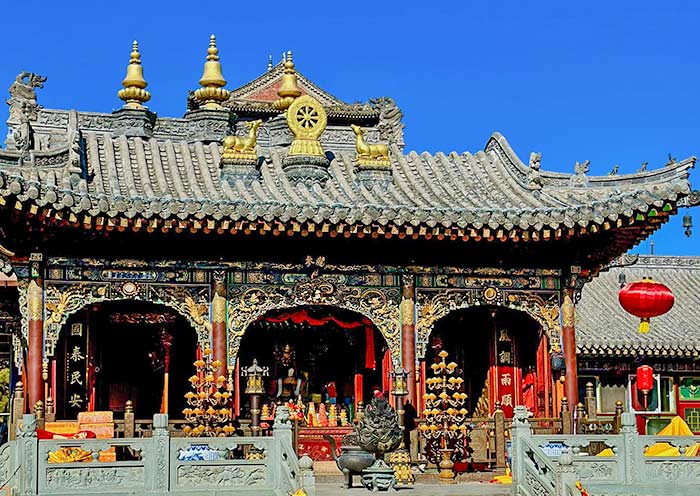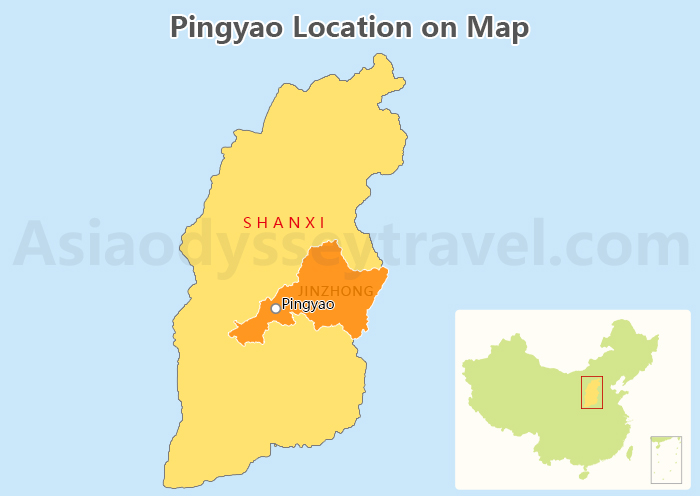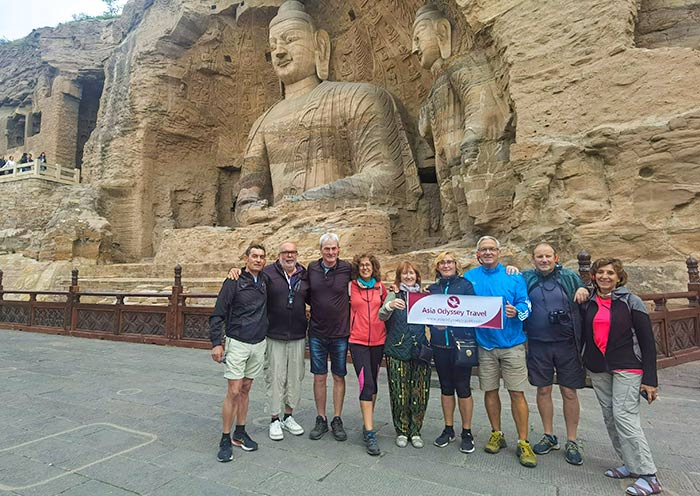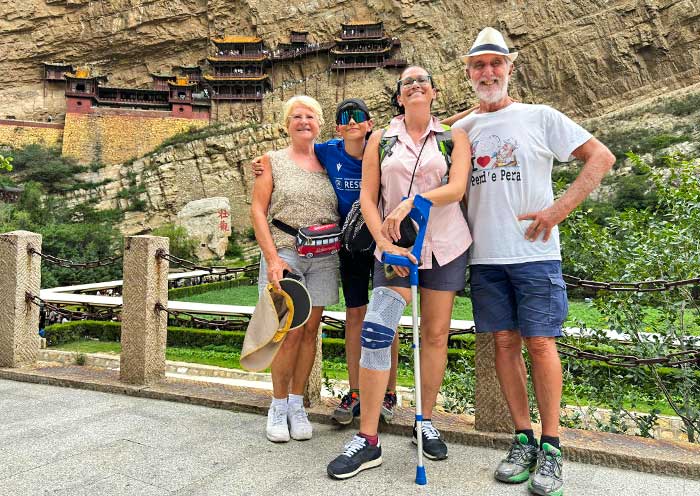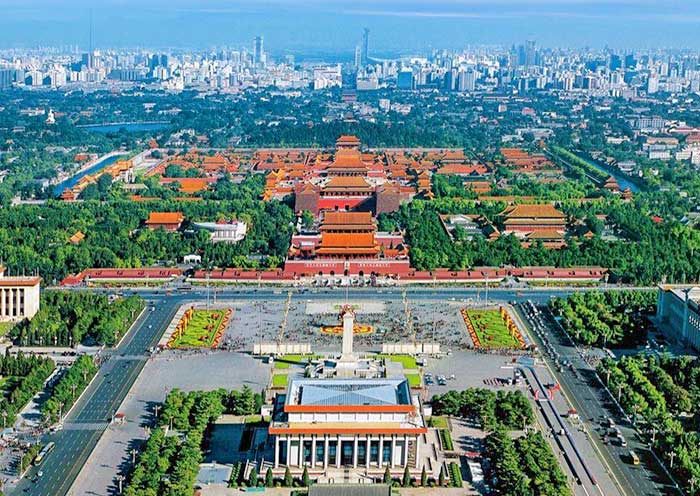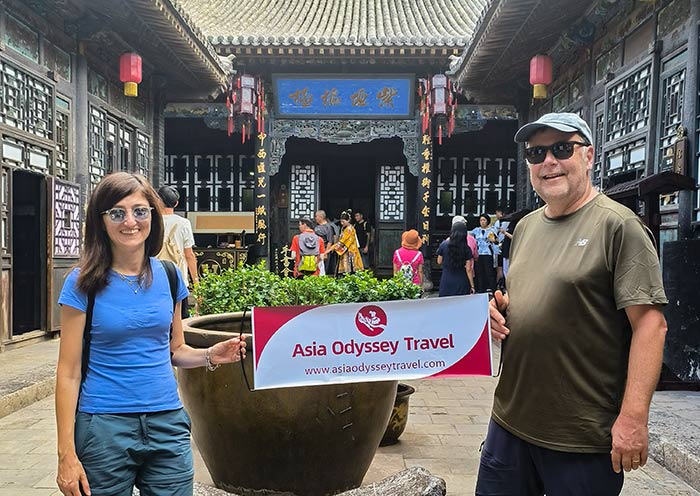1. Yungang Grottoes: UNSCO World Heritage Site & Royal Masterpiece
Location: No. 1, Yungang Town, Yungang District, Datong City, Shanxi Province, China
Ticket Price:
Peak Season: 120 yuan per adult (April 1st - October 31st)
Off-peak Season: 100 yuan per adult (November 1st - March 31st)
Opening Hours:
9:00 AM - 5:00 PM (April 1st - June 16th)
8:00 AM - 6:00 PM (June 17th - September 30th)
Visit Time: 2-3 hours
If you could only do one thing in Datong City, visiting the Yungang Grottoes (云冈石窟)would definitely be No.1 on your list. Inscribed on the World Heritage List in 2001, the Yungang Grottoes is China's first imperial-authorized grotto and can be considered a mega royal project of the Northern Wei Dynasty, which ruled northern China in the 5th century. It was carved by craftsmen from all over the country. The Yungang Grottoes is one of the three major grottoes in China (along with Longmen Grottoes(龙门石窟), Mogao Caves (敦煌莫高窟). Stretching for one kilometer, the grotto complex has a total of 254 Buddhist caves, of which about 40 are currently open to the public.
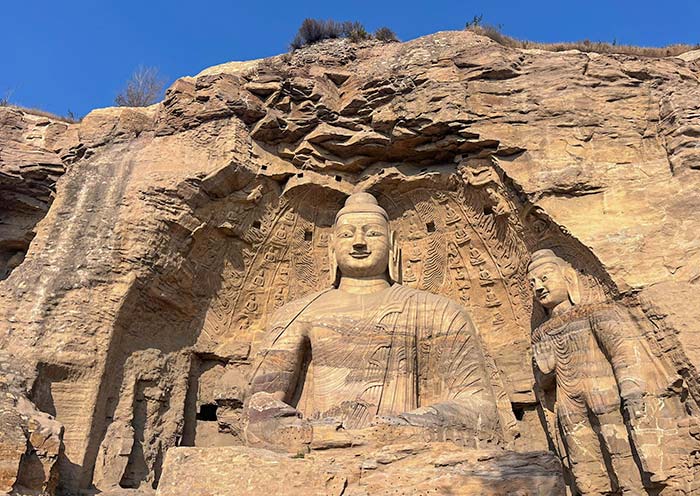
Must-See Caves at Yungang Grottoes: Exploring the 6 Most Unique Caves
Religious or not, you are welcome here to connect to the past and make fun things to feel the power of faith.
Begin your exploration in Cave 3, the largest and most imposing of the grottoes. As you venture deeper into the cool, cavernous interior, a sense of awe washes over you. Suddenly, your gaze is drawn upward to a colossal 10-meter bodhisattva statue. Her serene expression and intricate details are truly mesmerizing.
Next, immerse yourself in the artistic masterpieces of Caves 5 and 6. In Cave 5, stand in awe of the tallest Buddha statue in the entire complex, a towering figure that seems to touch the heavens. Then, journey through Cave 6 to witness the life of Shakyamuni Buddha depicted in a series of vivid carvings. This is considered one of China's earliest examples of religious comics, offering a fascinating glimpse into early Buddhist storytelling.
In the serene ambiance of Cave 7, encounter the renowned "Six Beauties" – a group of exquisite bodhisattva statues that have captivated visitors for centuries. Their delicate features and elegant poses are a testament to the skill of the ancient sculptors.
For those with a passion for music, Cave 12 is an absolute must-visit. Here, you'll find a lively depiction of a North Wei court orchestra, with musicians playing ancient instruments with great enthusiasm. Then, step into Cave 13 to marvel at the most imposing cross-legged Maitreya Buddha in the grottoes. His serene countenance and majestic posture are truly awe-inspiring.
Conclude your journey in the Thousand Buddha Cave (Cave 15), where countless small Buddha statues seem to fill every nook and cranny. Take your time to wander through this vast hall and appreciate the intricate details of each individual figure.
2. Ascend Hanging Temple to Witness Cliff-Hanging Architectural Marvel
Location: Foot of Hengshan Mountain, southeastern suburb, Hunyuan County, Datong City, Shanxi Province, China
Ticket Price: Entrance fee 15 yuan/Climbing Hanging Temple 100 yuan
Opening Hours:
Open from 7:30 AM to 6:30 PM, March 1st to October 31st.
Open from 8:30 AM to 5:00 PM, November 1st to February 28th.
Visiting Time:2 hours
Visiting Hanging Temple (悬空寺) can be the one of fun things to do in Datong Shanxi. The Hanging Temple is located not far from Datong city. Constructed around 1500 years ago during the Northern Wei Dynasty (491 AD), it's the only temple in China built under the unique cultural context of a fusion of Buddhism, Taoism, and Confucianism. Due to the temple seemingly hanging in midair against a sheer cliff, it's named the Hanging Temple.
Legend has it that a Taoist priest of the Northern Wei Dynasty, upon his deathbed, left behind a wish: to build a temple in the sky, a place that would ascend toward the divine realm above while remaining distant from the earthly noise below. His words became reality. The Hanging Temple was constructed by taking advantage of a natural crevice in the cliff. Twenty-seven locally sourced ironwood beams, shaped into square crossbeams, were deeply embedded into the rock fissures. Supported by these beams, which had been treated with tung oil to prevent decay, the entire temple has stood precariously on the cliff for nearly a millennium.
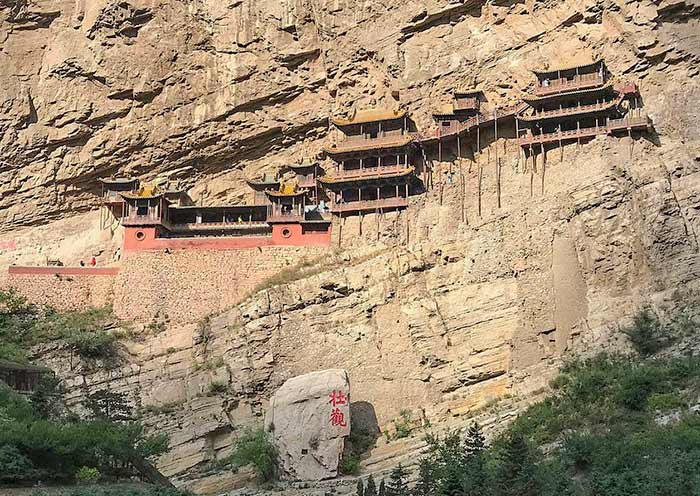
Experience Hanging Temple Climbing and the Fusion of Buddhism, Taoism, and Confucianism
Ascending the temple is the highlight of the Hanging Temple. This unique opportunity might not be available forever, as the temple has been deemed one of the "World's 10 Most Endangered Buildings" by Time Magazine. You can experience the thrill of being 50 meters above the ground as they navigate the narrow walkways and stairs. The temple's design requires you to ascend counterclockwise, adding to the adventure.
The blending of Confucian, Taoist, and Buddhist is another highlight worth exploring. Despite its compact size, the temple is divided into a north and south building, encompassing six palaces, over 40 halls, and more than 80 Buddha statues. Be sure to visit the north building, where Confucian Confucius, Taoist Laozi, and Buddhist Shakyamuni are enshrined together. This unique combination of three religions is extremely rare in China, offering visitors a chance to appreciate the harmonious coexistence of different faiths.
Visiting Hanging Temple can be the one of fun things to do in Datong Shanxi.
3. Nine Dragon Wall – Visit Royal Exorcism Practices
Location: No. 18, Dadong Street, Datong Ancient City, Pingcheng District, Datong City, Shanxi Province
Ticket Price: Free
Opening Hours:08:00 - 18:00 (5.1 – 10.15)
08:30 – 17:30 (10.16 – 4.30)
Suggested Visiting Time:Within an hour.
The Nine-Dragon Wall (九龙壁) is located in Datong City, Shanxi. Constructed in 1392, it boasts a history spanning over 600 years. Originally, it served as a single-sided, five-color glazed screen wall in front of the residence of the thirteenth son of the Hongwu Emperor. It is the largest, oldest, and most exquisitely crafted glazed screen wall of its kind in China today. The wall derives its name from the nine glazed, colored dragons depicted on its surface. While dragons are often portrayed as fearsome creatures in English-speaking world, in Chinese traditional culture, dragons represent power, dignity, and good fortune.
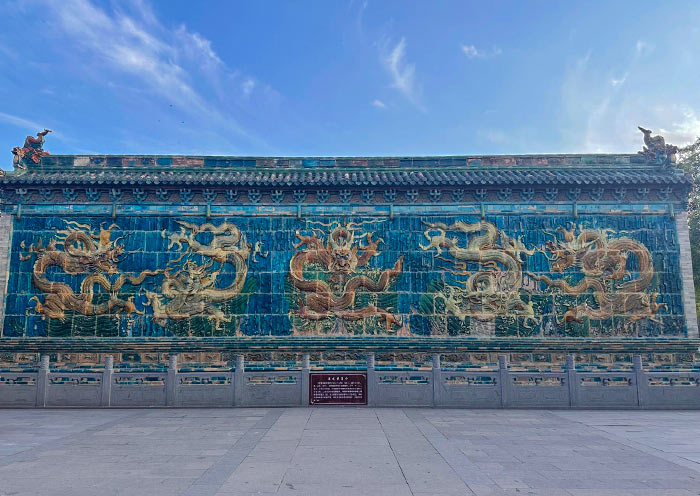
Strolling in Front of the Nine Dragon Wall
Surrounding this 8-meter-high, 2.02-meter-thick, and 45.5-meter-long Nine Dragon Wall, you'll be amazed at how well-preserved this Ming Dynasty structure is. Upon closer inspection, you'll discover it's adorned with 426 colorful glazed tiles in shades of yellow, green, blue, purple, black, and white, a vibrant testament to the craftsmanship of ancient dynasties. Further examination reveals intricate details like clouds, flowing clouds, waves, and cliffs.
Fascinatingly, the placement of Nine Dragon Walls was believed to ward off disasters, with dragons invoked to ensure peace. Moreover, in ancient times, dragons were exclusively used by the royal family, making this a unique opportunity of Datong trip.
4. Discover the Charm of Huayan Temple
Location: No. 459, Xia Sipu Street, Pingcheng District, Datong City, Shanxi Province, China
Ticket Price:
Peak Season: 50 yuan (April 1st - October 31st)
Off-peak Season: 40 yuan (November 1st - March 31 st)
Opening Hours:
08:00-18:30 (April 1st - October 31st)
08:30-17:30 (November 1st - March 31 st)
Recommend Visiting Time: 1 - 3 hours.
Datong has another temple worth seeing. Huayan Temple (华严寺) was first constructed in 1062 and named after the Buddhist scripture, the Huayan Sutra. It was originally a royal temple and is one of the three remaining Liao Dynasty temples in China. The Liao Dynasty was ruled by the Khitans, an ethnic group, thus the temple exhibits distinct Khitai characteristics.
Unlike traditional Chinese temples that are generally oriented north-south, Huayan Temple faces east. This unique orientation is a vivid expression of the Khitai spirit, as they believed that all good things came from the sun. By facing east, the temple's doors would be illuminated by the first rays of the morning sun.
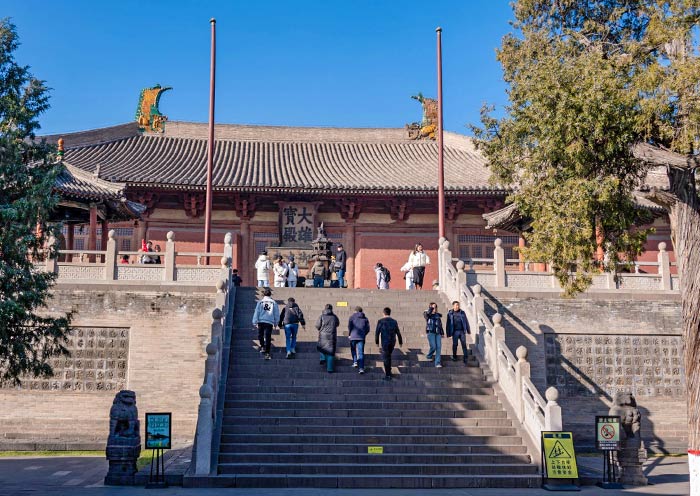
Visit the Wooden Architecture, Colorful Statues, Mural
Huayan Temple offer a variety of things to do: three main highlights. The first is the wooden architecture. Visitors can tour the Great Hall of the Universe and the Sutra Repository Hall, which reflect the wooden structure of Liao Dynasty buildings. All the beams and columns are tightly connected like puzzle pieces. Looking up at the corners of the temple, visitors will find dougong brackets under the eaves, which resemble boats and support the building. Don't rush off, the wall paintings inside the halls are the temple's second highlight. Visitors can admire the Buddhist murals
The second highlight of the temple is its colorful sculptures. In the Sutra Repository Hall, you'll find 31 captivating Liao Dynasty clay sculptures, including a lifelike Bodhisattva with a toothy smile. Don't miss the chance to admire these ancient masterpieces. Lastly, be sure to check out the murals in the Great Hall of the Universe. Painted during the Jin Dynasty and later restored in the Qing Dynasty, these nearly thousand-year-old murals are truly impressive.
5. Watch Yingxian Wooden Pagoda, Tallest & Oldest Wooden Pagoda in World
Location: No. 1, Yingyuan Street, Yingxian County, Shuozhou City, Shanxi Province, China
Ticket Price: 50 yuan(January 1st - December 31st)
Opening Hours:
08:00-18:00 (January 1st - December 31st)
Visiting Time: 1 - 3 hours.
Yingxian Wooden Pagoda (应县木塔) is located southwest of Datong city center. Standing at a height of 67.31 meters, it is the oldest and tallest wooden multi-storey structure in the world. Built during the Liao Dynasty, it has stood for over 940 years.
The pagoda does not contain a single iron nail, relying solely on its wooden structure for its integrity. Despite experiencing countless earthquakes and artillery attacks over nearly a millennium, it has remained remarkably well-preserved.
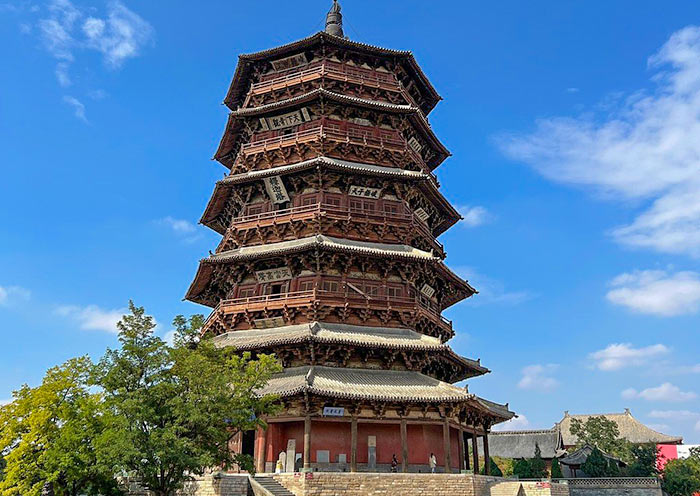
Admire the Intricate Dougong Brackets and First-Floor Buddha Statue
Upon arriving at the Yingxian Wooden Pagoda, visitors can first check the tower's exterior from a distance. You'll notice that each tier of the eaves is supported by intricately carved dougong brackets, a unique feature of ancient Chinese architecture. These brackets vary in direction, creating beautiful spatial curves on each level.
Whether you are religious or not, the wooden pagoda welcomes you. You can visit the first floor, as the upper floors are currently closed to the public. Upon entering the first floor, you will be greeted by an approximately 11-meter-tall statue of Shakyamuni Buddha, erected over 900 years ago during the Liao Dynasty to promote Buddhism. The wall paintings, which depict Buddhist disciples and guardian deities, are another fascinating aspect to explore.
6. Relax at Datong City Wall
Location: Caochangcheng Street, Pingcheng District, Datong City, Shanxi Province, China
Ticket Price: Free
Opening Hours:
7:00 AM - 10:00 PM (March - May)
7:00 AM - 11:00 PM (June - August)
7:00 AM - 10:00 PM (September - November)
7:00 AM - 9:00 PM (December - February)
Recommended Visit Duration: 1 - 3 hours.
Located in the heart of Datong City, Datong City Wall (大同城墙) is known as the “key to the north”.
Standing at a height of 14 meters, it was constructed in 1372 during the Ming Dynasty. It's one of the most well-preserved Ming Dynasty city walls north of the Yangtze River.
The city wall, which was primarily maintained by imperial dynasties, served as a defensive barrier against invasions from nomadic tribes in the north. Given Datong's strategic location at the crossroads of various ethnic groups, the wall has weathered numerous wars and natural disasters. Remarkably, it remains largely intact to this day.
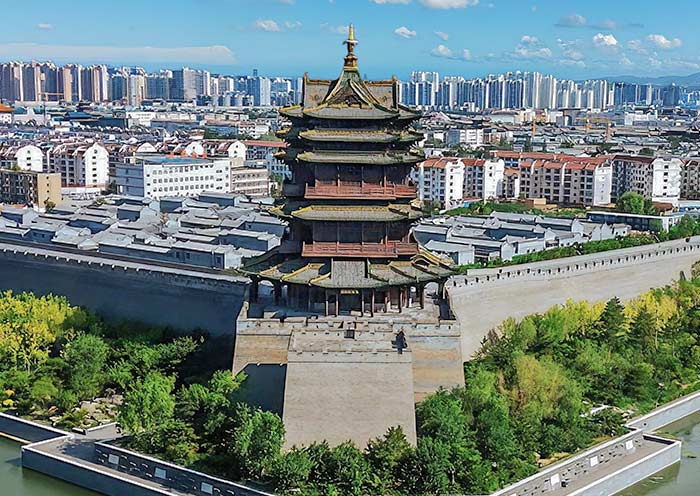
Wander Through the Datong City Wall, Check Uneven Wall and Barbican
Why is Datong's ancient city wall so incredibly strong? Uncover the secrets for yourself by visiting this historic marvel.
Upon closer inspection, you'll discover that the outer contour of the wall isn't a simple straight line like most fortifications. Instead, it's designed with an interlocking pattern resembling gear teeth. Each of these projections served a strategic military purpose, leaving no blind spots.
While exploring the wall, you'll also encounter the impressive barbican, a fortified structure integrated into the main wall. These barbican outworks played a crucial role in reinforcing the city's defenses.
7. Conquer the Mount Heng: One of the Five Great Mountains of China
Location: Hengshan South Road, Hunyuan County, Datong City, Shanxi Province, China
Ticket Price: 45 yuan per person
Opening Hours:
8:00 AM - 4:30 PM (March 1st - April 30th)
8:00 AM - 5:30 PM (May 6th - September 30th)
Visiting Time: more than 3 hours.
Mount Hengshan (North Hengshan恒山) is approximately 80 kilometers away from Datong City, Shanxi Province. As one of the Five Great Mountains of China (Mount Tai, Mount Huashan, Mount South Heng, Mount North Heng, and Mount Song), it is a sacred site of Taoism and is renowned for its Taoist cultural heritage and magnificent natural scenery. Its highest peak reaches an altitude of 2016.1 meters.
The name "Hengshan" means eternally stable, signifying the mountain's steadfastness. In ancient China, Mount Hengshan was considered the representative of northern China, symbolizing firmness and eternity.
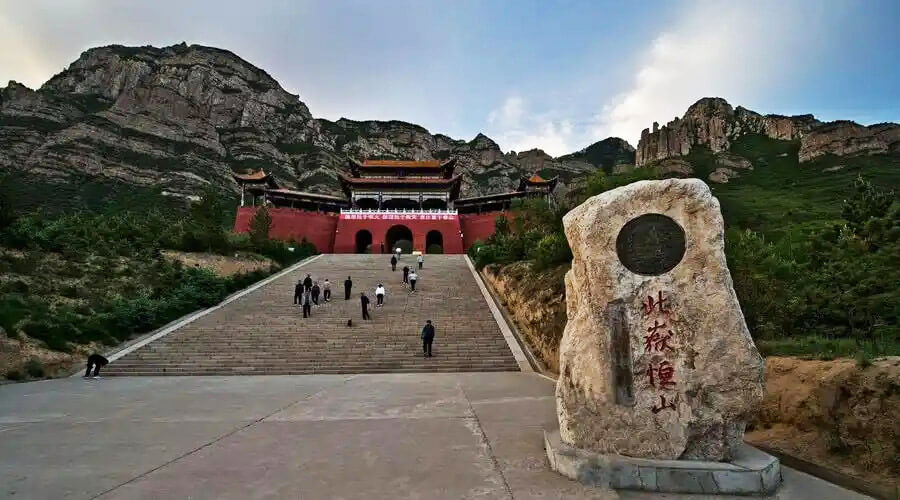
Visitors to Mount Heng can take a cable car to the middle of the mountain to visit a group of Taoist temples. From there, you can choose to climb the steps to the summit. The final stretch before reaching the peak is quite challenging, with seemingly endless steps. Once you reach the broad platform at the top, you can find a spot to enjoy the magnificent view of the mountains below.
8. Unveil the Four Divine Guardians in the Shanhua Temple
Location: No. 6, Nansi Street, Pingcheng District, Datong City, Shanxi Province, China
Ticket Price: 40 yuan per person
Opening Hours:
8:00 AM - 6:00 PM (May to October)
8:00 AM - 5:00 PM (November to April)
Recommended Visiting Time: 1 – 1.5 hours
If you're planning a trip to Datong, you might as well check out the Shanhua Temple (善化寺).
Shanhua Temple, also known as the Southern Temple, was initially constructed between 713 and 741 AD. It is one of the largest and most well-preserved Liao and Jin Dynasty buildings in China. Shanhua Temple, along with Yungang Grottoes and Hanging Temple, served as a location for the game “Black Myth: Wukong”. If you've played the game or watched any videos, you might have a vivid impression of the four colorful statues within the temple.
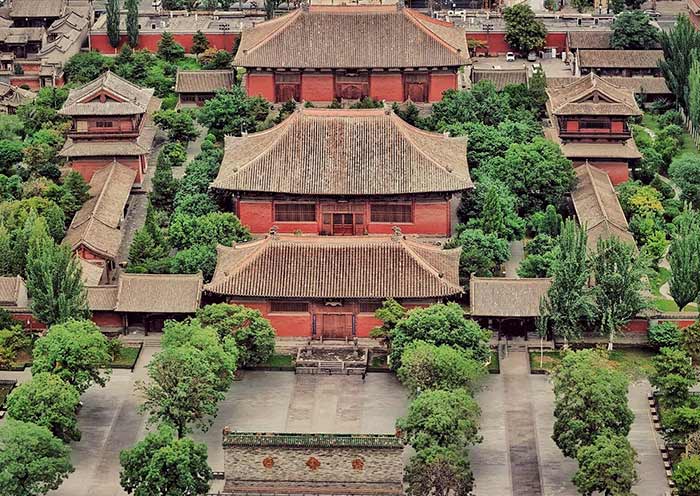
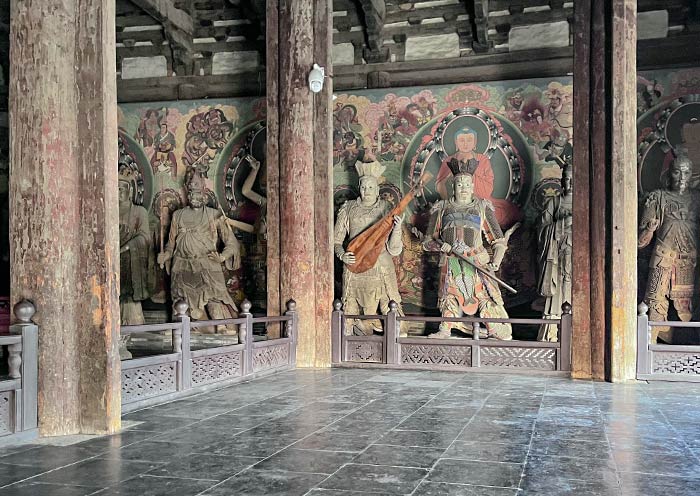
Watch the Four Colossal Statues
Regardless of one's beliefs, Shanhua Temple welcomes all. You can pass through the grand mountain gate and enter the Heavenly Kings Hall, where Ming Dynasty sculptures of the Four Heavenly Kings are enshrined. Upon entering the hall, you will find four colossal statues, each over seven meters tall, standing on either side. They hold a sword, a pipa, a parasol, and a snake, respectively, symbolizing favorable weather conditions for agriculture. In ancient China, these statues were like the superstar of the Super Bowl halftime show.
9. Touch the Northern Wei Dynasty at the Datong Museum
Location: No. 506, Taihe Road, Pingcheng District, Datong City, Shanxi Province, China
Ticket Price: 40 yuan per person
Opening Hours:
9:00 AM - 5:00 PM (Last entry at 4:00 PM, closed on Mondays)
Recommend Visit Duration: 2 - 3 hours
Datong Museum (大同博物馆) was established in 1959. Architecturally, the entire building revolves around a central hall in a spiral shape, symbolizing the dragon culture and grotto culture of Datong.
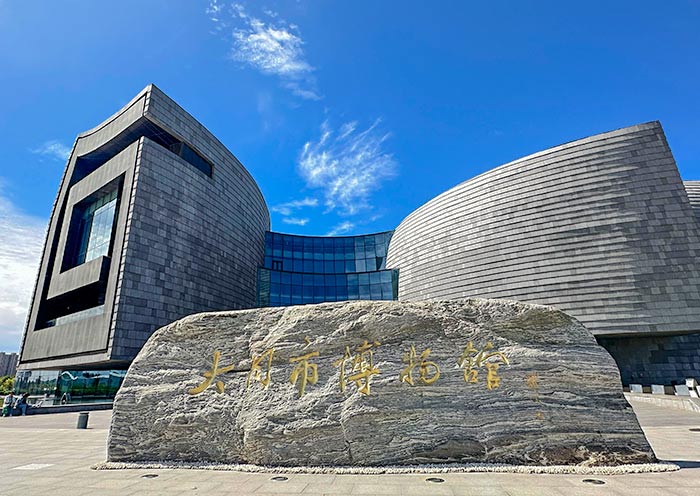

The museum is divided into three floors, offering visitors a rich collection of artifacts. Upon entering the first floor, you'll encounter dinosaur fossils. Turn around, and you'll be immersed in the historical vicissitudes of Datong and the exquisite porcelain of the Liao and Jin dynasties. Ascending to the second floor, you'll delve into the history of the Northern Wei Dynasty, gaining a deeper understanding of the dynasties behind the Yungang Grottoes and Hanging Temple. Challenge yourself to connect the exquisite architecture with the rich culture!
10. Enjoy Datong Lantern Festival and Torch Festival
Beyond the ancient temples and historical sites, Datong offers a wealth of exciting events that will immerse you in local culture.
Datong Lantern Festival
When: the 15th day of the first lunar month
As the Chinese New Year comes to a close, Datong hosts a grand lantern festival featuring a dazzling array of lanterns, accompanied by dragon and lion dances, acrobatics, and more. With large crowds and a lively atmosphere, it's a unique opportunity for visitors to experience the local culture firsthand.
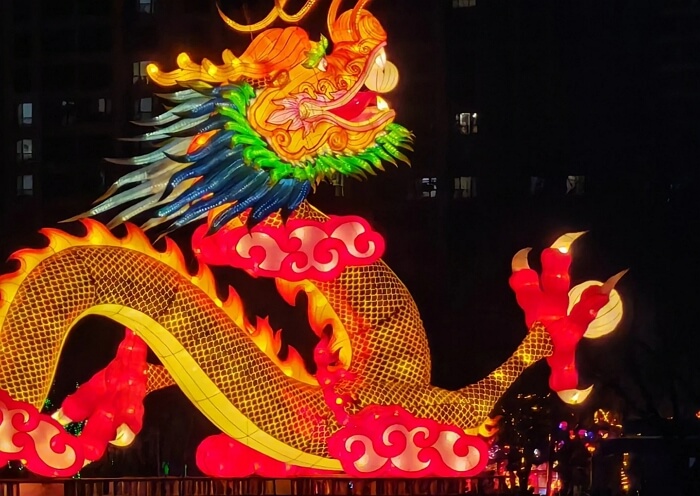
Datong Torch Festival
When: Annually in Summer
The Torch Festival is a traditional holiday celebrated by many ethnic minority groups in China, especially the Yi(彝族), Bai(白族), Naxi(纳西族), and Lisu(傈僳族) peoples. Join the locals as they carry towering flaming torches through the streets, creating a mesmerizing spectacle that symbolizes the driving away of evil spirits and the hope for a prosperous year.
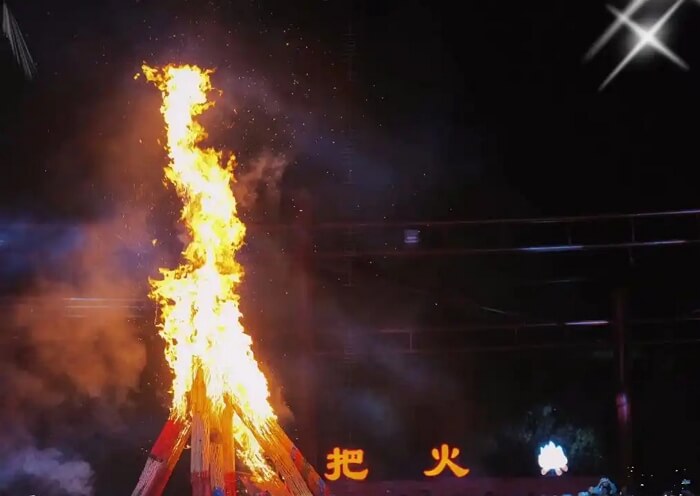
11. Savor the Datong Knife-Cut Noodle
A trip to Datong is simply incomplete without trying the local specialty, Datong knife-cut noodles! Hailing from Shanxi Province, this traditional noodle dish has gained nationwide fame.

Visitors can experience the thrill of trying to pick up the smooth, slippery noodles with chopsticks. Each noodle is shaped like a tree leaf, thicker in the middle and thinner at the edges. The first bite reveals a smooth exterior that gives way to a chewy interior. The texture is somewhat reminiscent of Italian pappardelle or tagliatelle, offering a wide, hearty chew with every bite.
Every bowl of knife-cut noodles is a handmade masterpiece. Skilled noodle makers balance a dough disc as large as a flying saucer on their shoulders and quickly slice off noodles using a sharp blade. Each noodle is expertly flicked into a pot of boiling water before being served in a flavorful broth. The dish is typically topped with a savory pork sauce.
Tips for Things to Do in Datong
Transportation: Public transportation to Datong includes high-speed rail, bus, and taxi. If you have a fixed itinerary, public transportation is the best option. In Datong, for spontaneous trips, you can use ride-hailing apps like Didi Chuxing, similar to Uber.
Payment: The most direct way to pay is with Chinese Yuan. It's recommended to exchange a small amount of Yuan at the airport or a bank upon arrival in China. Most ATMs and merchants accept UnionPay cards, which can be used directly in China. Some ATMs and merchants also accept international credit cards like Visa and MasterCard, but they may not be accepted in smaller shops or markets. For more details, check out How to Pay in China.
Best Time to Visit Datong: April to October
Luggage Storage: Luggage storage is available at Datong Yungang Airport and all train stations in Datong from 6 AM to 10 PM.
Hiring a Guide: Guides are knowledgeable about all of Datong's attractions and can answer any questions you may have. They can also provide recommendations for accommodation and local cuisine (like knife-cut noodles).
Around Datong:
Taking a train or driving southeast from Datong, you can reach Mount Wutai, one of China's four sacred Buddhist mountains and a UNESCO World Heritage Site. Pay homage to Manjusri Bodhisattva or simply climb the mountain to marvel at the breathtaking natural scenery. Along the way, you might even encounter a wild fox.
Descending southwest from Mount Wutai, you can visit Pingyao Ancient City, another UNESCO World Heritage Site and one of the best-preserved ancient cities in China. Explore the ancient town layout, be amazed by ancient banks, and catch a random performance of traditional Chinese opera at the theater.
Contact your Datong Travel Expert of Asia Odyssey Travel for details on Datong attractions and travel tips.
Choose Best Things to Do in Datong, Tour with Asia Odyssey Travel
For your Datong trip, visitors often allocate 2-3 days explore the essence of Datong attractions such as Yungang Grottoes, Hanging Temple, Yingxian Wooden Pagoda, and other worth-visiting sights. If you'd like to explore Datong and other Shanxi attractions in greater detail, it is recommended to spend 4-6 days for your Shanxi trip to visit Mount Wutai, Pingyao Ancient City, etc.
High-Recommended 6 Days Shanxi Tour:
Day 1: Datong Yungang Grottoes - Nine Dragon Screen Wall - Huayan Temple
Day 2: Hanging Temple – Yingxian Wooden Pagoda
Day 3: Mount Wutai
Day 4: Mount Wutai - Taiyuan
Day 5: Taiyuan - Pingyao Ancient City
Day 6: Zhangbi Ancient Castle - Wang's Family Compound
